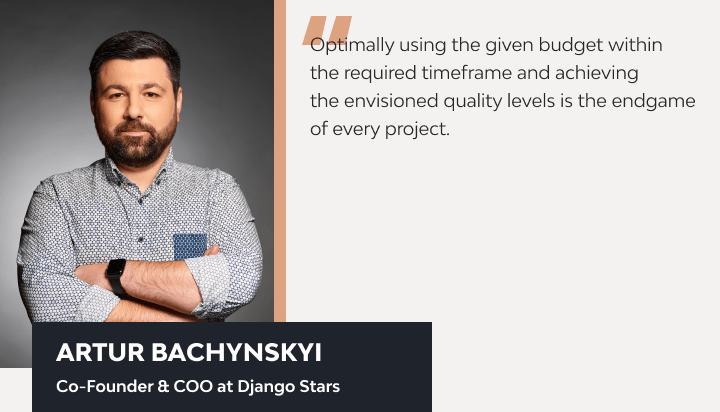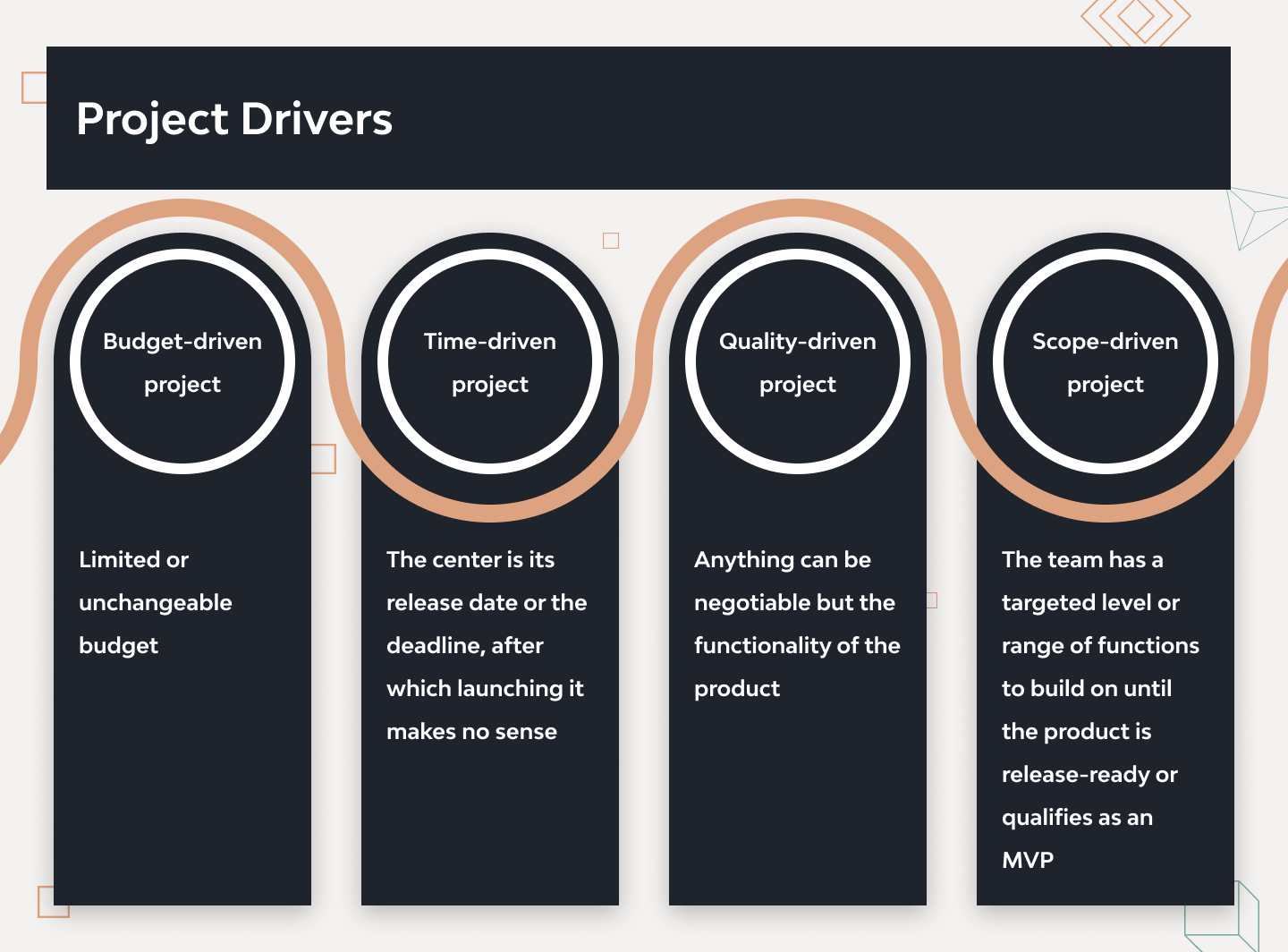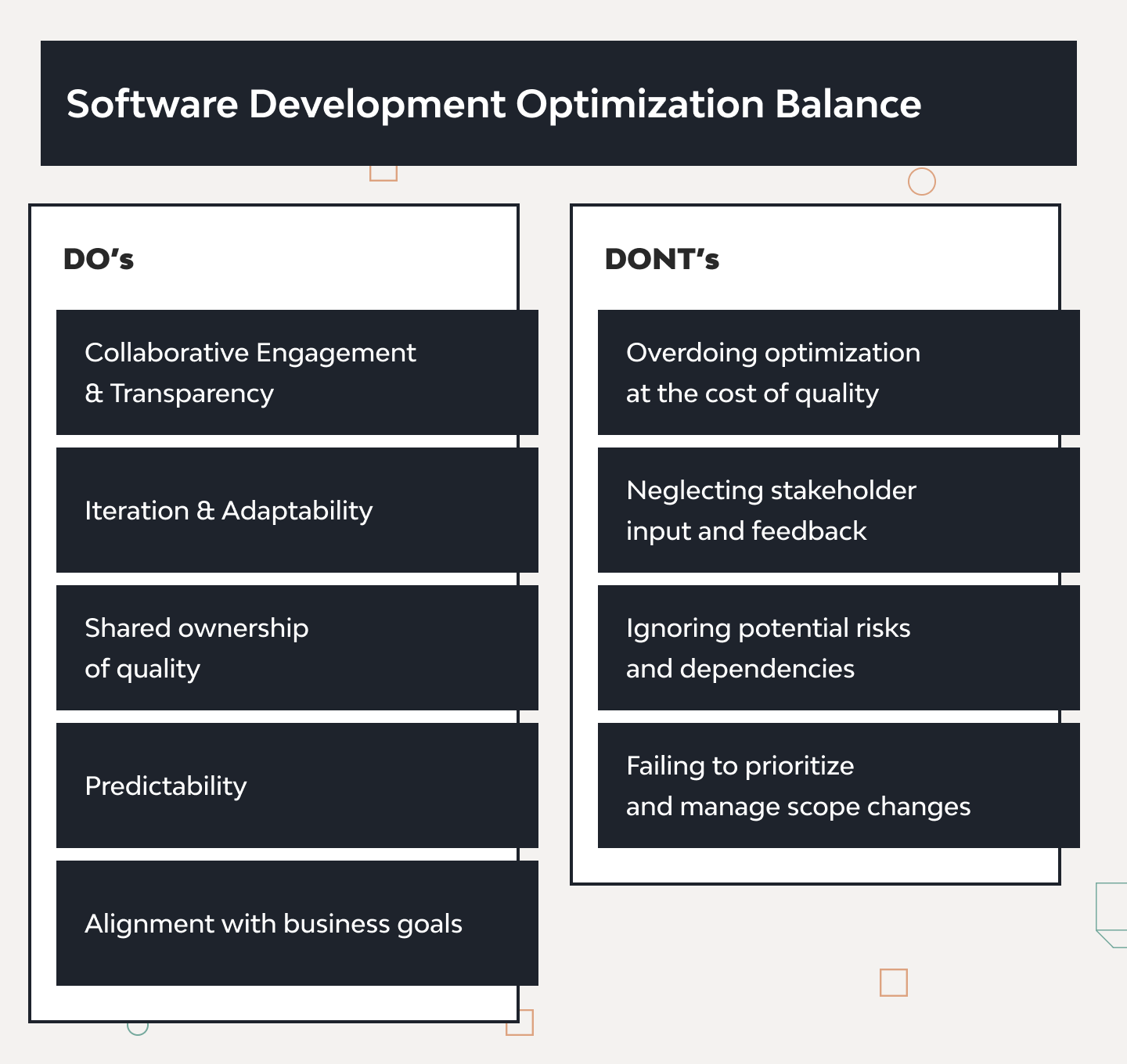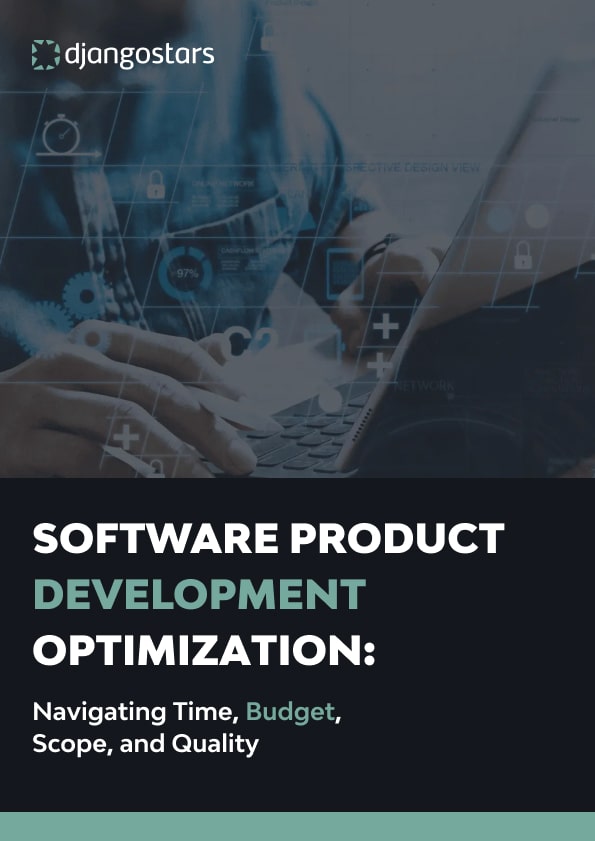Software Product Development Optimization: Navigating Time, Budget, Scope, and Quality

Planning the software development process toward the big release, upgrade, or MVP launch, has standard stages that make the progress predictable and manageable. However, even in Django Stras’ 15-year experience, there were no identical cases.
Every project is a one-of-a-kind combination of parameters, conditions, and resources at the start, combined with the vision of the stakeholders or the idea behind the project. Navigating all of these properly will present the stakeholders and the tech team with the key to optimizing the value of the project and reaching the targeted results.

First thing first: define the project driver
Whether the business chooses to gather an in-house development team or find an outsourced partner for that, there must be a shared understanding of flexible and non-negotiable aspects of the project. This way, everyone has the same vision, understands risks, and acknowledges their role in the project’s success.
In Django Stars’ practice, the optimization areas are defined around the project’s budget, time, quality, or scope. These are natural components of development planning but for each business, they take different places in the system of priorities. If any of these things drive the project, it means, there is less flexibility in this regard, and thus, decisions on the project will be made with these in mind. Based on the mutually understood project drivers, it is easier for the team and the stakeholders to find space for flexibility and optimize the development process effectively.

A budget-driven project is one with a limited or unchangeable budget. Stakeholders in such projects can compromise the time frame and define the range for the product’s quality and scope, but the challenge for them and the development team is to prevent going past the funding limit.
In a time-driven project, the center is its release date or the deadline, after which launching it makes no sense. Time-driven projects allow for flexibility in budget and progressive adjustments of the scope. However, missing the deadline is one risk factor here. Think of applications for events or exhibitions that are only needed at a certain date.
If your project is driven by quality, anything can be negotiable but the functionality of the product. These are projects in health care, finance, military, and other industries, in which a malfunction of the technology can cost a human life.
Finally, in a scope-driven project, the team has a targeted level or range of functions to build on until the product is release-ready or qualifies as an MVP. In such projects, the targeted quality is viewed as a range rather than a one or zero, and time and budget allow for gradual expansion of the product’s scope.
With a thorough analysis of the project parameters and business needs, the team has all the chances to plan the development process properly and reach all the set goals.
How to balance software development optimization?
The product’s roadmap to personalized development optimization can have its boosters to embrace and pitfalls to avoid.

Most of the complications, risks, and optimization opportunities are worked out during the Discovery Phase. It includes research and planning and defines the further steps in the project. This stage engages all the key roles in the project on both ends. The results of the discovery phase are a properly planned budget, an understanding of the scope, a project timeline, and outlined risks.
In the case of Django Stars, effective communication with stakeholders along with Agile management frameworks, allows for sticking to these principles of development process optimization. When these principles manifest in vision, planning, and communication with stakeholders, it is easy for the team to steer clear of the pitfalls that can damage the product and trigger the outlined risks.
To learn more about the keys to value optimization and see how to practically apply them in your project, download Django Stars’ handbook for free using the button below. It contains a detailed explanation of each way to approach a project with a case study in navigating budget-, time-, quality-, and scope-driven projects. In addition, the handbook gives tips on effective process optimization and outlines the possible pitfalls down this road.

Contact our team for assistance with the development of your project or technical consultation.








